- Home
- Peter Ackroyd
Queer City
Queer City Read online
CONTENTS
Cover
About the Book
About the Author
Also by Peter Ackroyd
List of Illustrations
Title Page
1 What’s in a name?
2 A red and savage tongue
3 A military lay
4 The friend
5 No cunt
6 Bring on the dancing boys
7 Soft and slippery
8 The rubsters
9 Suck thy master
10 Arsey-Versy
11 Continually wet
12 Good golly Miss Molly
13 Flats
14 Tiddy dolls
15 Rump riders
16 Omi-palone
17 Damned and done for
18 Howl
Picture Section
Acknowledgements
Bibliography
Index
Copyright
ABOUT THE BOOK
In Queer City Peter Ackroyd looks at London in a whole new way – through the history and experiences of its gay population.
In Roman Londinium the city was dotted with lupanaria (‘wolf dens’ or public pleasure houses), fornices (brothels) and thermiae (hot baths). Then came the Emperor Constantine, with his bishops, monks and missionaries. And so began an endless loop of alternating permissiveness and censure.
Ackroyd takes us right into the hidden history of the city; from the notorious Normans to the frenzy of executions for sodomy in the early nineteenth. He journeys through the coffee bars of sixties Soho to Gay Liberation, disco music and the horror of AIDS.
Today, we live in an era of openness and tolerance and queer London has become part of the new norm. Ackroyd tells us the hidden story of how it got there, celebrating its diversity, thrills and energy on the one hand; but reminding us of its very real terrors, dangers and risks on the other.
ABOUT THE AUTHOR
Peter Ackroyd is an award-winning historian, biographer, novelist, poet and broadcaster. He is the author of the acclaimed non-fiction bestsellers London: The Biography, Thames: Sacred River and London Under; biographies of figures including Charles Dickens, William Blake, Charlie Chaplin and Alfred Hitchcock; and a multi-volume history of England. He has won the Whitbread Biography Award, the Royal Society of Literature’s William Heinemann Award, the James Tait Black Memorial Prize, the Guardian Fiction Prize, the Somerset Maugham Award and the South Bank Prize for Literature. He holds a CBE for services to literature.
ALSO BY PETER ACKROYD
NON FICTION
London: The Biography
Albion: The Origins of the English Imagination
The Collection: Journalism, Reviews, Essays,
Short Stories, Lectures, edited by Thomas Wright
Thames: Sacred River
Venice: Pure City
The English Ghost
London Under
FICTION
The Great Fire of London
The Last Testament of Oscar Wilde
Hawksmoor
Chatterton
First Light
English Music
The House of Doctor Dee
Dan Leno and the Limehouse Golem
Milton in America
The Plato Papers
The Clerkenwell Tales
The Lambs of London
The Fall of Troy
The Casebook of Victor Frankenstein
Three Brothers
BIOGRAPHY
Ezra Pound and his World
T. S. Eliot
Dickens
Blake
The Life of Thomas More
Shakespeare: The Biography
BRIEF LIVES
Chaucer
J. M. W. Turner
Newton
Poe: A Life Cut Short
Wilkie Collins
Charlie Chaplin
Alfred Hitchcock
List of Illustrations
1 Sappho, from Les Vrais Pourtraits et vies des Hommes Illustres, Andre Thevet, 1584. Image: Glasshouse Images / Alamy Stock Photo
2 Radish, English school, c. 19th century. Image: Private Collection / © Look and Learn / Bridgeman Images
3 Early mounted Knights Templar in battle dress, Italian school, 1783. Image: Bibliotheque des Arts Decoratifs, Paris / Archives Charmet / Bridgeman Images
4 ‘Piers Gaveston and the Barons’, 1872. Image: 19th era / Alamy Stock Photo
5 The Pardoner, from Geoffrey Chaucer’s Canterbury Tales. Image: University Library, Cambridge (Photo by Culture Club / Getty Images)
6 Ganymede, 1878. Image: ZU_09, iStock images
7 George Villiers, 1st Duke of Buckingham, after Cornelius Johnson, c. 1623. Image: Hulton Archive / Getty Images
8 Frontispiece for T. Dekker and T. Middleton’s The Roaring Girle, 1611. Image: Culture Club / Getty Images
9 Aphra Behn, after John Riley, c. 18th century. Image: Chronicle / Alamy Stock Photo
10 Captain Edward Rigby, after Thomas Murray, 1702
11 A male brothel, La prostitution contemporaine, 1884. Image: Wellcome Library, London (CC BY 4.0)
12 View of Newgate prison, c. 1760. Image: Guildhall Library & Art Gallery / Heritage Images / Getty Images
13 Hannah Snell, c. 1745. Image: MPI / Getty Images
14 A macaroni, from Social Caricature in the Eighteenth Century, Emily Morse Symonds, 1905. Image: The Print Collector / Print Collector / Getty Images
15 ‘Trying & Pillorying of the Vere Street Club’, c. 1810
16 Frontispiece for Jack Saul’s The Sins of the Cities of the Plains, 1881
17 ‘A Night in the Cave of the Golden Calf’, The Daily Mirror, 1912
18 Gay Liberation Front Manifesto, 1971
Plate Section
1 Greek red figure pottery, c. 500 BC. Image: Ancient Art and Architecture / Alamy Stock Photo
2 ‘Costume of a Saxon Chief’, Charles Hamilton Smith, 1815. Image: The Protected Art Archive / Alamy Stock Photo
3 Statue of the Emperor Trajan, London, 1959. Image: View Pictures / UIG via Getty Images
4 Seventeenth-century map of London, C. J. Visscher, c. 1650. Image: British Library, London (CC Public Domain Mark 1.0)
5 William Rufus, Historia Anglorum, c. 1259. Image: British Library, London © British Library Board. All Rights Reserved / Bridgeman Images
6 ‘Death of Piers Gaveston’, c. 1850. Image: The Print Collector / Print Collector / Getty Images
7 ‘Knights, Templars’, English School, c. 19th century. Image: Private Collection © Look and Learn / Bridgeman Images
8 ‘Chaucer’s Canterbury Pilgrims’, William Blake, c. 1810
9 Sixteenth-century map of London, Frans Hogenburg, c. 1570. Image: National Library of Israel, Jerusalem
10 The Droeshout portrait of William Shakespeare, 1623. Image: The Bodleian First Folio (CC BY 3.0)
11 Christopher Marlowe, c. 1585. Image: Parker Library, Corpus Christi College, Cambridge
12 King James I of England and VI of Scotland, Daniel Mytens, 1621. Photo © National Portrait Gallery, London
13 Ann Mills, c. 1740. Image: Rischgitz / Getty Images
14 Christina Davies, aka Christopher Welsh, c. 1706
15 Mary Ann Talbot, c. 1800. Image: Three Lions / Getty Images
16 Ann Bonny and Mary Read, c. 18th century. Image: Stefano Bianchetti / Corbis via Getty Images
17 ‘A Morning Frolic, or the Transmutation of the Sexes’, after John Collet, c. 1780. Image: Yale Center for British Art
18 ‘This is not the thing: or, Molly exalted’, 1762. Photo © The Trustees of the British Museum
19 Edward Kynaston, Richard Cooper and R.B. Parkes, c. 19th century
20 King William III, studio of Sir Peter Lely, 1677. Photo © National Portrait Gallery, London
21 A ‘molly house’ interior, 1874. Image: Interim Archives / Getty Images
22 The Bishop of Clogher arrested for a homosexual act with a soldier, George Cruikshank, 1822
23 Charles Bannister as Polly Peachum, James Sayers, c. 19th century
24 ‘The St James’s Macaroni’, James Bretherton, 1772. Image: Guildhall Library & Art Gallery / Heritage Images / Getty Images
25 The Chevalier d’Eon, c. 18th century. Image: Photo12 / UIG via Getty Images
26 Frederick Park and Ernest Boulton, aka Fanny and Stella, Fred Spalding, c. 1870. Image: Essex Record Office, Chelmsford
27 Oscar Wilde, Napoleon Sarony, c. 1800. Image: Universal History Archive / Getty Images
28 16 Tite Street, London, c. 1910. Image: Hulton Archive / Getty Images
29 E. M. Forster, c. 1920. Photo © Hulton-Deutsch Collection / CORBIS / Corbis via Getty Images
30 Radclyffe Hall, 1928. Image: Planet News Archive / SSPL / Getty Images
31 Map of London’s public urinals, from Paul Pry’s For Your Convenience, Philip Gough, 1937
32 A policeman silhouetted against the lights of Piccadilly, Ernst Haas, c. 1955. Image: Ernst Haas / Ernst Haas / Getty Images
33 Sir John Wolfenden, 1957. Photo © Illustrated London News Ltd / Mary Evans
34 Quentin Crisp, 1948. Image: Popperfoto / Getty Images
35 Joe Orton, c. 1965. Image: Bentley Archive / Popperfoto / Getty Images
36 John Gielgud in a stage production of Oscar Wilde’s The Importance of Being Earnest, 1947. Image: Bettmann / Getty Images
37 Biograph Cinema, Victoria, London to Hell and Back, c. 1950. Photo © Ronald Grant Archive / Mary Evans
38 Women dancing together at the Gateways club or ‘The Gates’ in Chelsea, 1953. Photo © Alan Vines / reportdigital.co.uk
39 OutRage! protest, Steve Mayes, c. 1994. Photo: Steve Mayes, OutRage!
40 Protest against the Blasphemy Law, Mick Gold, 1978. Image: Mick Gold / Redferns
41 Protesters ride a pink tank past Trafalgar Square, Richard Smith, 1995. Image: Richard Smith / Sygma via Getty Images
42 A couple celebrate at Pride, Tom Stoddart, 2007. Image: Tom Stoddart / Getty Images
43 Madame JoJo’s, Ben Pruchnie, 2016. Image: Ben Pruchnie / Getty Images
44 Equal Love campaign for marriage equality, Paul Hackett, 2011. Image: Paul Hackett / In Pictures via Getty Images
45 Soho vigil for victims of the Orlando shooting, Tolga Akmen, 2016. Image: Tolga Akmen / Anadolu Agency / Getty Images
Every effort has been made to trace or contact copyright holders. The publishers will be pleased to make good any omissions or rectify any mistakes brought to their attention, at the earliest opportunity.
1
What’s in a name?
The love that dares not speak its name has never stopped talking. If it was once ‘peccatum illud horribile, inter christianos non nominandum’ – that horrible crime not to be named among Christians – it has since been endlessly discussed.
‘Queer’ was once a term signifying disgust, but now it is pronounced with a difference. It has become the academic word of choice, and ‘queer studies’ are part of the university curriculum.
‘Gay’ comes from who knows where. It can be construed as a derivation from ‘gai’ in Old Provençal, meaning merry or vivacious, or from ‘gaheis’ in Gothic, meaning impetuous, or from ‘gahi’ in Frankish, meaning fast. Whatever the language, it used to connote frantic fun and high spirits. In English, ‘gay’ was originally attached to female prostitutes and the men who chased them. All the gay ladies were on the market. Its twentieth-century same-sex sense seems to have been invented by Americans in the 1940s. There was a long period of incubation before it made its way to England; even in the late 1960s, there were still many who did not understand the phrase ‘gay bar’.
Sodomy was, from the eleventh century, a catch-all term that could mean anything or everything. It was applied to heretics and adulterers, blasphemers and idolaters and rebels – anyone, in other words, who disturbed the sacred order of the world. It was also associated with luxury and with pride, and was regularly connected with excessive wealth. It was of course also employed for those who had different ideas about the nature of sexual desire, and was sometimes thrown in as a further accusation with other crimes including buggery.
The ‘bugger’ was originally a heretic, specifically one of the Albigensian creed which had come from Bulgaria; but since part of that creed condemned matrimonial intercourse, and indeed any kind of natural coupling, the connotations of the word spread beyond the grounds of religion. It is derived from the French bougre, as in pauvre bougre or poor sod.
The ‘ingle’, or depraved boy, was well known by the end of the sixteenth century. Is there a phrase – every nook should have an ingle? Ingal Road still survives in east London. ‘Pathic’, or the passive partner, came to the light of day in the early seventeenth century; ironically the pathic did not need to be aroused, but the male agent did. Yet only the pathic was punished. It was a question of social, rather than sexual, disfavour. The pathic was following his own path in defiance of convention and in dereliction of his social duty. He was like a cat among sheep.
‘Catamite’ was coined in the same period as pathic. A ‘chicken’ was an underage boy, hence the term ‘chicken hawk’. Such words might have had an underground existence for many decades before becoming common currency since, of course, the activity was still not to be named. The prototype of slang terms for all boy queers was the young and beardless ‘Ganymede’, often portrayed with a cockerel in his hand and also known as kinaidos.
In the eighteenth century ‘mollies’ were singled out for attention. ‘Jemmy’ was an abbreviation for James I whose appetites were well known, although a less common term was ‘indorsers’ from the boxing slang for pummelling the back of an opponent. In one Newgate transcript a pickpocket is advised to ‘leave these Indorsers to their beastly Appetites’. A more polite term was ‘fribble’ after a character invented by David Garrick. Other eighteenth-century terms included ‘madge’ and ‘windward passage’ as well as ‘caudlemaking’ or ‘giving caudle’ from the Latin cauda for tail. Queers were often called ‘backgammon players’ or ‘gentlemen of the back door’, sometimes engaged in ‘caterwauling’. They might also engage in ‘gamahuche’, or the act of fellatio, which was applied to females as well as males.
Effeminacy has always been part of what David Garrick, as Mr Fribble, called ‘ooman nater’. It was not entirely reserved for queers, and indeed was also applied to men who loved women too dearly for their own good. In John Wycliffe’s biblical translation of the late fourteenth century, ‘effeminati’ is rendered as ‘men maad wymmenysch’. They were considered self-indulgent and silly. They were soft or weak. To complicate matters still further, they may have been asexual.
‘Effeminate’ is not to be confused with ‘camp’ which implies a deliberate intention to divert, to shock, or to amuse; camp suggests a flourish, or a display, and it is supposed to come from the Italian verb campeggiare, to stand out or to dominate. The sovereign of camp was, perhaps, the ‘queen’ or ‘quean’. The word was first applied to immodest or bold women, the strong ones of their sex, but by the early twentieth century it was equally applied to extravagant queers who could out-female the females.
A Hungarian, Karl-Maria Benkert, coined the term ‘homoszexualitás’ in 1869, thus becoming one of the unacknowledged legislators of mankind. It was for him not a question of morality, but of classification. The subject needed a clinician rather than a priest. Flowers are still placed on Benkert’s grave. Twenty-three years later, Charles Gilbert Chaddock rendered his term into English where it has remained ever since. Havelock Ellis described it as a ‘barbarous neologism, sprung from a monstrous mingling of Greek and Latin stock
’ but he may have been mistaking the word for the deed.
When in 1918 J. R. Ackerley was asked whether he was ‘homo or hetero’, he did not know what the question meant. Another English memoirist, T. C. Worsley, recalled that in 1929 homosexuality ‘was still a technical term, the implications of which I was not entirely aware of’. Even in the 1950s elderly gentlemen were flummoxed by the word. It did not arrive in the Valhalla of the Oxford English Dictionary until the supplement of 1976.
Another term emerged in 1862, in the work of Karl Heinrich Ulrichs. ‘Uranian’ or ‘urning’ was derived from Plato’s description of same-sex love in the Symposium as ‘ouranios’ or ‘heavenly’. (‘Ouranos’ literally means ‘the pisser’, opening up a further line of enquiry.) Whatever its celestial origins, the term did not quite catch on. Who would want to be called an ‘urning’? It sounds like some sort of gnome. An ‘urnind’ was a queer female, while ‘uranodionings’ were bisexual. Further awkward nomenclatures were found, ‘similisexualism’ and ‘homogenic love’ among them. The ‘invert’ was also discovered in the late nineteenth century, but he did not prosper as much as ‘pervert’.
Various euphemisms were in use among the mixed band of brothers and sisters in the late nineteenth century. Is he earnest? Is he so? Is he musical? Is he theatrical? Is he temperamental? Is he TBH? Or, in other words, is he to be had? A pair of young men, in the 1930s, might be asked whether they ‘share a flat’. Less euphemistic terms included ‘fairy’, ‘shirt-lifter’, ‘pansy’, ‘nancy boy’, ‘pervert’, ‘bone-smoker’, ‘poof’ which had once been ‘puff’, ‘sissy’, ‘Mary Anne’, ‘fudge-packer’, ‘butt-piler’, ‘pillow biter’ and, in the American tongue, ‘faggot’ or ‘fag’. Faggots were the sticks of wood on top of which accused sodomites were burned to death. That is, at least, one explanation. It may equally derive from the schoolboy drudge of a senior prefect. More complicated words came out of thin air. A ‘dangler’, in the nineteenth century, was one who pretended to like women but in reality did not.
The female variants of same-sex passion included ‘sapphist’ and ‘lesbian’ after the peerless poet of Lesbos, the latter term first appearing in the 1730s. ‘Sapphist’ often became ‘sapph’ in the early twentieth century. There are also allusions to ‘tribades’ or ‘tribadic women’ that come from both Latin and Greek sources. There is the ‘fricatrice’, one who rubs, and ‘subigatrice’, one who works a furrow. A ‘tommy’ is to be found in eighteenth-century England, and is first mentioned in the Sapphic Epistle of 1777. ‘Butch’, ‘femme’, ‘dyke’, ‘bull-dyke’ and ‘diesel-dyke’ can still sometimes be heard.

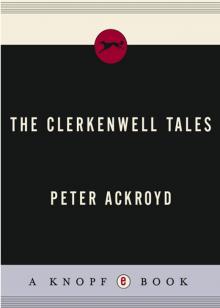 The Clerkenwell Tales
The Clerkenwell Tales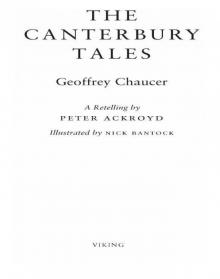 The Canterbury Tales
The Canterbury Tales J. M. W. Turner
J. M. W. Turner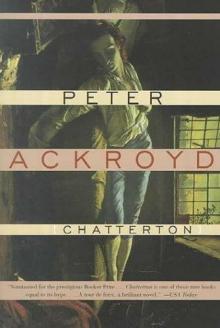 Chatterton
Chatterton The Canterbury Tales – A Retelling
The Canterbury Tales – A Retelling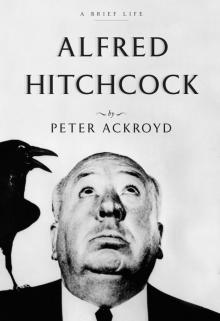 Alfred Hitchcock
Alfred Hitchcock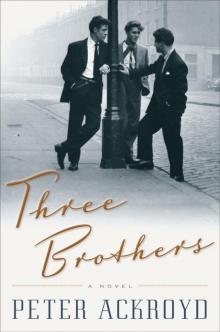 Three Brothers
Three Brothers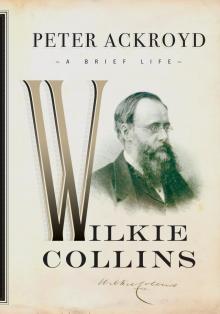 Wilkie Collins
Wilkie Collins Venice
Venice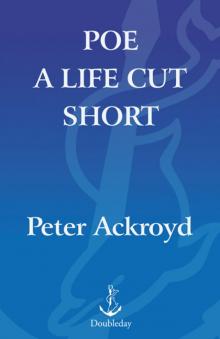 Poe
Poe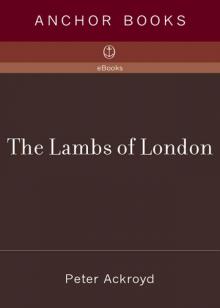 The Lambs of London
The Lambs of London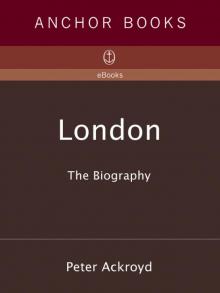 London
London Queer City
Queer City Revolution, a History of England, Volume 4
Revolution, a History of England, Volume 4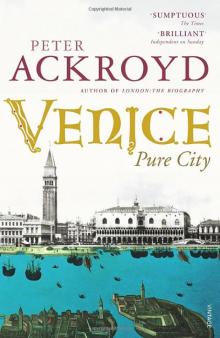 Venice: Pure City
Venice: Pure City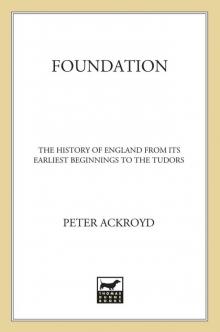 Foundation
Foundation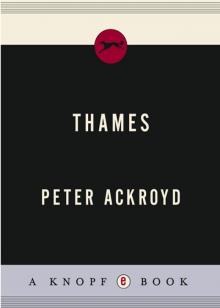 Thames
Thames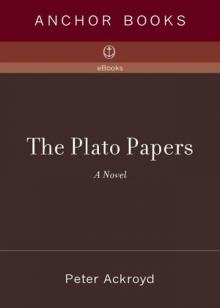 The Plato Papers
The Plato Papers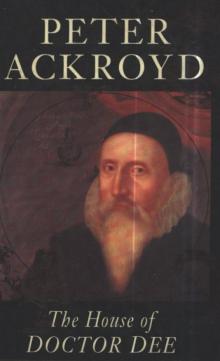 The house of Doctor Dee
The house of Doctor Dee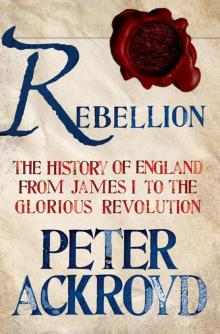 Rebellion: The History of England from James I to the Glorious Revolution
Rebellion: The History of England from James I to the Glorious Revolution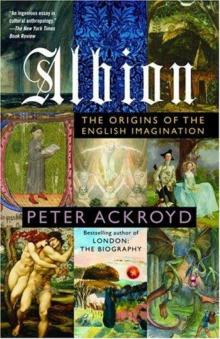 Albion: The Origins of the English Imagination
Albion: The Origins of the English Imagination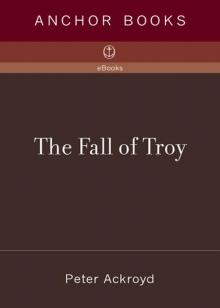 The Fall of Troy
The Fall of Troy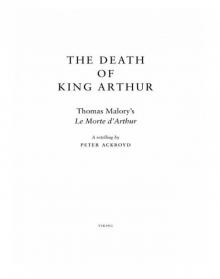 The Death of King Arthur
The Death of King Arthur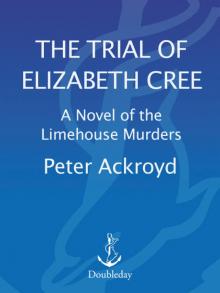 The Trial of Elizabeth Cree
The Trial of Elizabeth Cree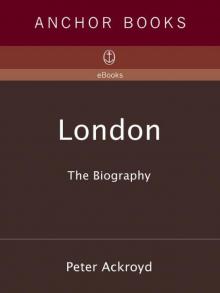 London: The Biography
London: The Biography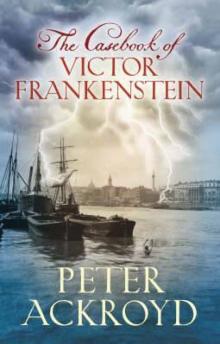 The Casebook of Victor Frankenstein
The Casebook of Victor Frankenstein Hawksmoor
Hawksmoor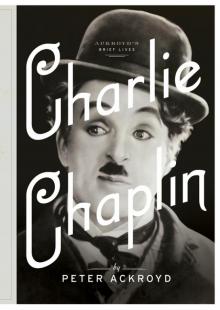 Charlie Chaplin
Charlie Chaplin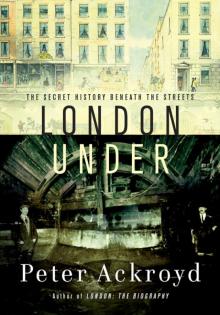 London Under
London Under